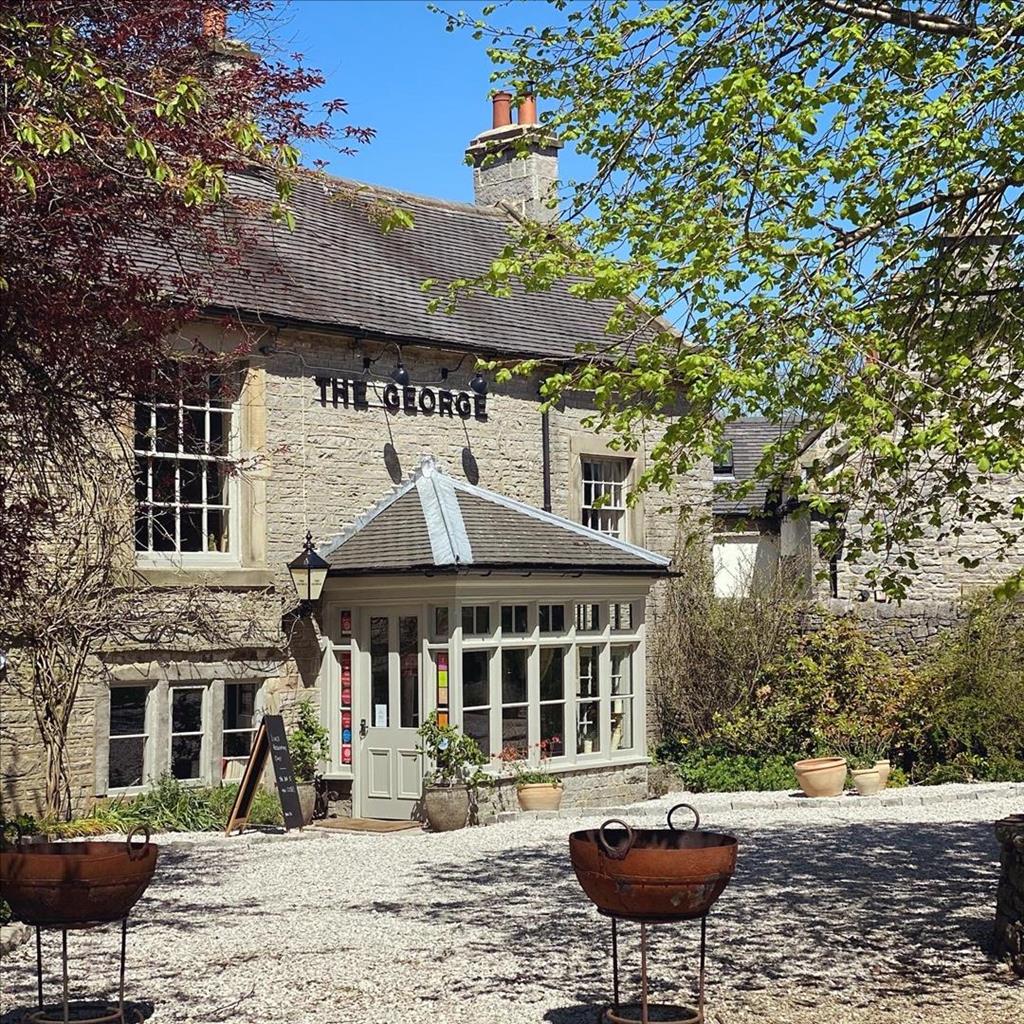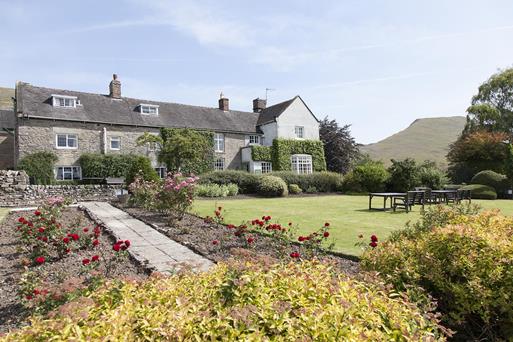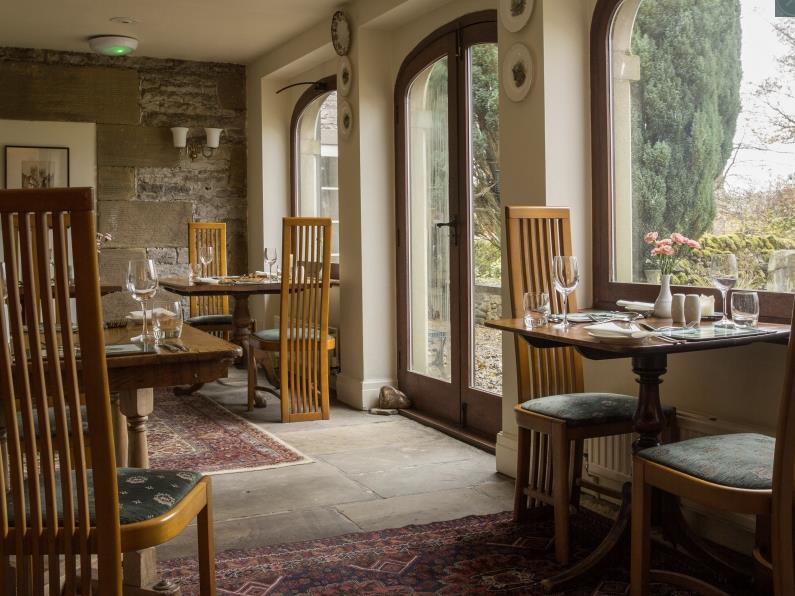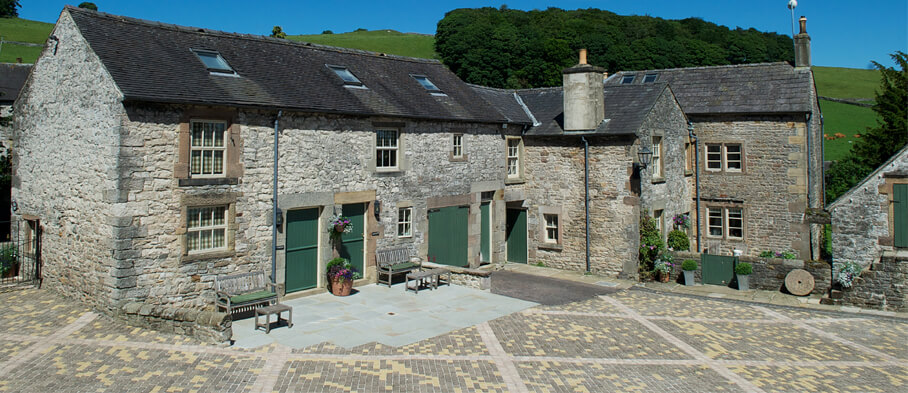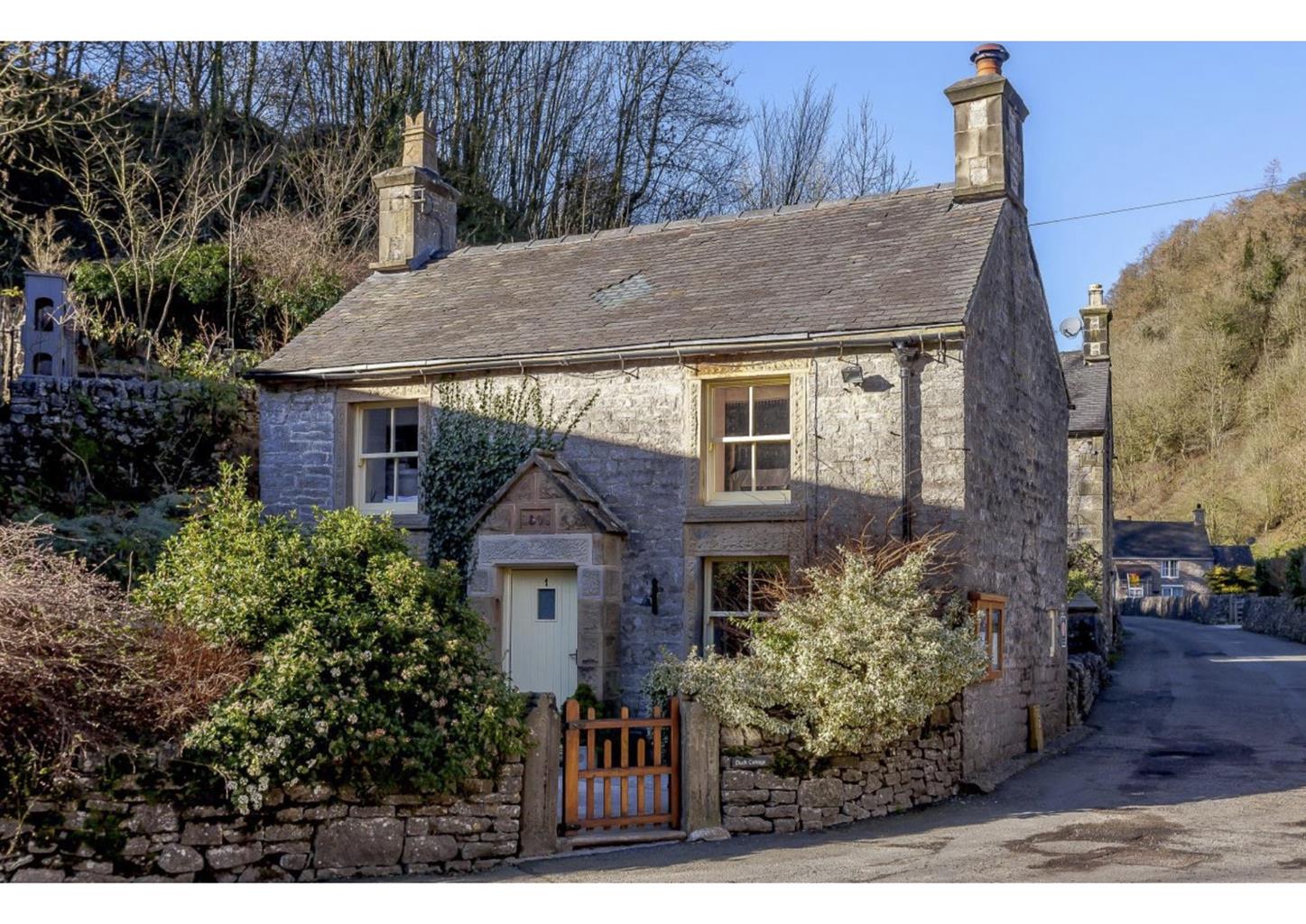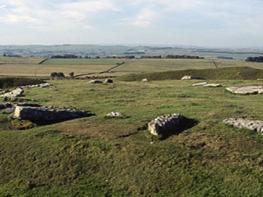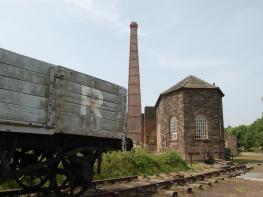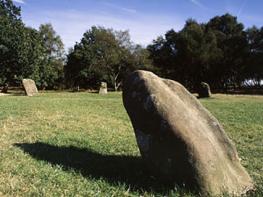Church Farm Cottages is made up of Pinster Cottage, and the slightly larger Winnets Cottage. The…
Alsop en le Dale

5.25 miles (8.4kms)
About the walk
To describe Alsop en le Dale as a village may be to raise expectations, since it could just as well be called a hamlet, but nevertheless it’s a peaceful and charming location well away from the crowds of Dovedale. Even the noisy traffic of the nearby A515 seems far removed, although once the main road came through here and stagecoaches no doubt rested before their long pull up towards Buxton.
Perhaps not surprisingly a new route was eventually fashioned beyond Fenny Bentley, north of Ashbourne, that climbed steadily up to and then stayed on the higher ground, so avoiding the steep climb in and out of the Bradbourne valley to visit Alsop. The later railway-builders also followed suit, leaving Alsop a secluded backwater.
Alsop Church
The Church of St Michaels and All Angels dates back to Norman times and was once a dependency of the ‘mother’ church in Ashbourne. Indeed, the oak pulpit once belonged to a church in Ashbourne and was removed, it is assumed, with permission. The church still has a number of Norman features, including the doorway and window in the south wall, which like the other walls of this small building are surprisingly thick. The church was renovated in the early 1880s, when the tower was added, and in 2000 a new window was installed to commemorate the Millennium.
Across the lane from the church is Alsop Hall, a splendid (and privately owned) Elizabethan manor house.
A Remote Station
For a community as small as Alsop, comprising one hall, three farms and four cottages, it seems remarkable that it once had its own railway station. Of course it also served other surrounding villages like Alstonefield, as well as allowing local farms to transport their milk to dairies. Both the station and platform at Alsop, opened in 1899, were simple affairs and made out of timber. These small stations or halts provided passing loops for the trains, since between Ashbourne and Parlsey Hay it was a single track line.
As you will note, puffing up from Alsop to the finish of this walk at the site of the former station, it’s an undulating landscape and the railway-builders had to battle quite a gradient. Huge cuttings and embankments were necessary to enable the trains to make the long haul out of Ashbourne past Tissington and Alsop and across the high plateau of the southern Peak District, where then as now it’s a remote and unpopulated place. Not long after the line opened a train was derailed in snowy conditions and was marooned for three days. The engine crew were kept going thanks to hot food and drinks provided by local farmers.
Walk directions
From the car park head south on the Tissington Trail for just over 1.5 miles (2.4km). At an embankment ignore a signposted turning to Parwich on the left and continue until you pass beneath a bridge in a deep wooded cutting. Just beyond this turn sharply left for a wallside path back up to the top of the bridge.
Don’t cross the bridge but instead turn right. Head half right down across a field, then beyond a small gate continue more steeply past trees to the valley bottom. Cross Bletch Brook by a footbridge and climb up the far hillside, veering right across another footbridge. At a signpost continue across the hilltop beside a fence until you reach a stile in the far right corner.
To visit Parwich turn right, over the stile, and down a tree-lined track to the first bend. Go through the right of two gates for a path that slants down the hillside across two fields, aiming for the gateway of Brook Close Farm in the valley bottom below. Turn right on to the lane and walk into the centre of the village to visit the church, pub or pleasant green beside the duck pond.
Retrace your steps to return to the stile on the main route of the walk. Beyond the stile walk straight ahead through the next field to a kissing gate. Ignore the left turn and go straight on through a succession of fields. Follow waymarkers to the left of Parwich Lees (a house), across a rough lane and then aim for the far left corner of the next field. Skirt the craggy and tree-fringed slopes to the left, go through more fields, then turn right on a stony track to reach the road.
Turn left and follow the lane through Alsop en le Dale, past Manor Farm and the church. Just beyond the next bend take the footpath on the left. It climbs the steep grassy slope, switches to the right of the wall, and with Stonepit Plantation on the left returns to the Tissington Trail and the car park.
Additional information
Field paths and firm trail, 18 stiles
Rolling farmland
On lead around livestock
AA Leisure Map 7 Central Peak District
Alsop Station pay car park
None on route, nearest at Tissington
WALKING IN SAFETY
Read our tips to look after yourself and the environment when following this walk.
Find out more
Also in the area
About the area
Discover Derbyshire
The natural features of this central English county range from the modest heights of the Peak District National Park, where Kinder Scout stands at 2,088 ft (636 m), to the depths of its remarkable underground caverns, floodlit to reveal exquisite Blue John stone. Walkers and cyclists will enjoy the High Peak Trail which extends from the Derwent Valley to the limestone plateau near Buxton, and for many, the spectacular scenery is what draws them to the area.
The county is well endowed with stately homes – most notably Chatsworth, the palatial home of the Duke and Duchess of Devonshire, with its outstanding collections of paintings, statuary and art. Other gems include the well preserved medieval Haddon Hall, the Elizabethan Hardwick Hall, and Kedleston Hall, whose entrance front has been described as the grandest Palladian façade in Britain.
The spa town of Matlock is the county’s administrative centre and other major towns of interest include Derby and the old coal mining town of Chesterfield, with its crooked spire. Around the villages of Derbyshire, look out for the ancient tradition of well dressing, the decorating of springs and wells – the precious sources of life-sustaining water – with pictures formed from flowers.
Nearby stays
Restaurants and Pubs
Nearby experiences
Recommended things to do
Why choose Rated Trips?
Your trusted guide to rated places across the UK
The best coverage
Discover more than 15,000 professionally rated places to stay, eat and visit from across the UK and Ireland.
Quality assured
Choose a place to stay safe in the knowledge that it has been expertly assessed by trained assessors.
Plan your next trip
Search by location or the type of place you're visiting to find your next ideal holiday experience.
Travel inspiration
Read our articles, city guides and recommended things to do for inspiration. We're here to help you explore the UK.

